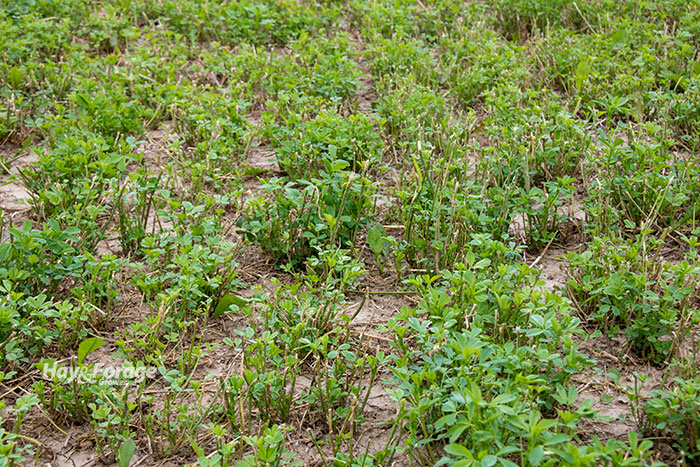Numerating alfalfa plants and stems |
| By Mike Rankin, Managing Editor |
|
|
 Describing an alfalfa field beyond “It looks good” or “It looks bad” has never been easy. For many producers, that’s about as scientific as it gets when determining whether to terminate a stand or not. Going to the next level of alfalfa stand quantification usually involves counting plants per square foot. “A plant density of 25 to 30 plants per square foot or more is recommended in fall of the seeding year,” notes Craig Sheaffer with the University of Minnesota. “This provides not only for maximum yields but also enough plants to overwinter and to support productive stands in subsequent years,” adds the forage extension specialist. A recent research study at the University of Minnesota evaluated alfalfa yields over a wide range of plant densities. Dry matter yield was measured during the seeding year and for the first two production years of the stands. During the seeding year, alfalfa yield was maximized at about 30 plants per square foot. There was little difference in yield between 20 and 40 plants per square foot. For established stands, the researchers found there was a yield drop off at below 10 plants per square foot, which was double the accepted recommendation of five plants per square foot as a threshold to terminate a stand because of low yield potential. In this study, only about 25% to 30% of the variation in alfalfa yield could be attributed to plant density. To state that more bluntly, the number of plants per square foot is a poor indicator of alfalfa yield potential. A better approach For a number of reasons, alfalfa plant density declines as stands age. Surviving plants, which grow in a less competitive environment, develop larger root systems and crowns. Unless these plants are hindered by disease or wheel traffic damage, they usually produce more shoots per plant. It’s now widely accepted that counting stems offers a more accurate prediction of potential yield than counting plants. University of Wisconsin research from many years ago determined that 55 or more stems per square foot are needed for maximum yields. It was also suggested to consider terminating stands that were below 40 stems per square foot. “Our recent research also shows that stem density is a better predictor of alfalfa yield than plant density beginning in the year after seeding,” Sheaffer states. “While stem density is a poor predictor of yield in the seeding year, it was a better predictor in the first and second production years.” The Minnesota study determined that about one-half of the yield variability in a first or second production year stand was attributed to differences in stem number per square foot. The same research resulted in slightly different threshold values than what was reported initially in Wisconsin. For example, Sheaffer and his co-workers found that 70 stems per square foot were needed to maximize yields. More factors involved In summarizing the current body of yield-prediction knowledge, Sheaffer states, “It is important to clarify that our prediction of relationships between stem density and yield explained less than 50% of the changes in yield. Even earlier research in Wisconsin found that stem density changes explained less than 60% of the changes in yield. These results show that other plant morphological traits, such as stem mass and stem leafiness, interact to affect yield.” The forage agronomist also points out that plant diseases, environmental conditions, and soil fertility can affect the relationship of both stem numbers and plant numbers with yield. |
